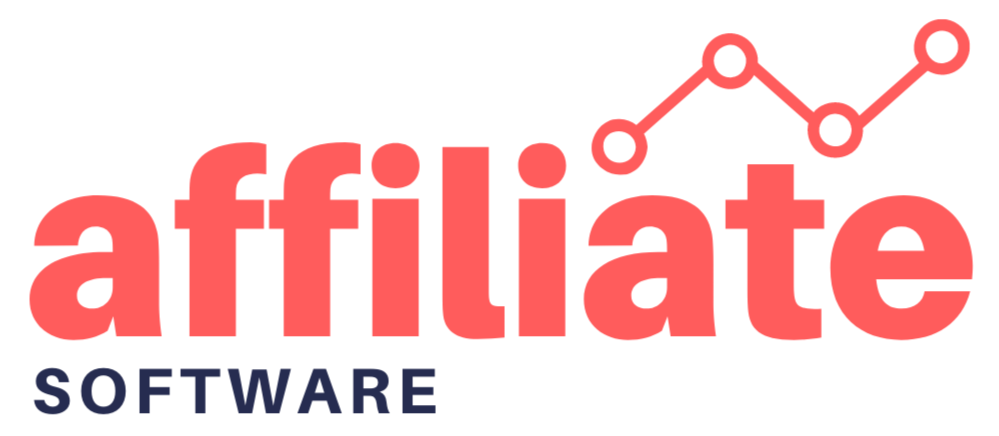Discover effective strategies for affiliate link placement in your blog posts. I’ll share insider tips to boost conversions and maximize your earnings ethically.

Best Practices for Affiliate Link Placement in Blog Posts
We manage affiliatesoftwareonline.com and see how affiliate marketing changes blogs into money makers. Successful affiliate marketers can make a lot of money by placing links wisely. They even quit their day jobs.
Effective affiliate marketing is all about smart link placement. It’s not just about adding links anywhere. The right placement of your affiliate is crucial. We’ll share the best ways to put affiliate links in your blog posts to increase sales and earnings.
We’ll talk about everything from how affiliate links work to creating great calls-to-action. Our goal is to help you make the most of your affiliate marketing. Whether you’re experienced or new, you’ll learn how to boost your blog’s income with smart link placement.
Understanding Affiliate Links and Their Potential
Affiliate marketing is key for bloggers and content creators to make money. They work with merchants and share affiliate links to earn commissions. This way, you can make money even when you’re not working.
With affiliate links in your content, you can keep earning money over time. It’s a great way to make passive income. It’s also good for businesses because it helps them sell more without spending a lot of money.
In 2022, the U.S. spent $8.2 billion on affiliate marketing. It’s expected to grow to $15.7 billion by 2024. Successful creators like Pat Flynn make good money from it. He promotes software on his site, Smart Passive Income.
| Key Affiliate Marketing Statistics | Value |
|---|---|
| U.S. Business Spending on Affiliate Marketing (2022) | $8.2 billion |
| Projected Affiliate Marketing Industry Growth (by 2024) | $15.7 billion |
| Average Affiliate Marketer Monthly Earnings | $8,038 |
| Average Monthly Earnings for Newer Affiliates | $636 |
Affiliate marketing is a great chance for creators and businesses. It lets you make money through affiliate links. It’s also a growing field for cost-effective marketing.
Strategic Placement of Affiliate Links
Affiliate marketing is now a huge industry, worth billions. It’s all about where you put affiliate links. These links track who buys what, helping affiliates make money. By placing links in blogs, social media, and emails, affiliates can engage their audience better.
Being open and honest is key in affiliate marketing. The FTC says you must clearly show you’re working with affiliates. Good content is vital for success in affiliate marketing.
Choosing the right affiliate network is important. Networks like ShareASale and CJ Affiliate offer good support and pay well. They have different ways to earn money, like for each sale or click. It’s also important to know how to use their tools and follow their rules.
| Affiliate Network | Commission Structure | Payout Interval | Key Features |
|---|---|---|---|
| ShareASale | PPS, PPC | Monthly | Consistent payouts, good support |
| CJ Affiliate | PPS, PPC | Monthly | Diverse advertiser network, robust reporting |
| Amazon Affiliate Program | PPS | Monthly | Wide product range, large customer base |
| Booking.com Affiliate Program | PPS | Monthly | High commission rates for travel-related content |
By placing affiliate links in top content, affiliates can earn more. This also makes their content better and more engaging. It builds trust and leads to more sales and happy users.
Balancing Affiliate Link Density
When adding affiliate links to your content, finding the right balance is key. Too many links can make your content look spammy and lose readers. But, not enough links means you’re missing out on money.
Create high-quality content that solves your audience’s problems. This way, affiliate links will blend in smoothly. It’s all about making your content better, not worse.
| Affiliate Link Density | Impact on Content Quality | Impact on User Experience |
|---|---|---|
| Low | May miss opportunities to monetize | Readers may not notice or engage with affiliate links |
| High | Content appears spammy and low-quality | Readers may feel overwhelmed or distrustful |
| Balanced | Enhances content quality and relevance | Provides a seamless, natural user experience |
By balancing your content, you can make it both useful and profitable. This way, you keep your audience happy and earn from your recommendations. It’s all about giving value and making money.
Making Affiliate Links Attention-Grabbing
Creating eye-catching affiliate links is key to getting more clicks and sales. Use bright colors, bold fonts, or cool icons to stand out. This grabs your readers’ attention and makes them want to click.
Make sure your links go straight to the product or service you’re promoting. This saves your readers time and might increase sales. Also, use clear calls-to-action (CTAs) to tell your readers what to do next.
Putting affiliate links in popular content can make them more visible. For example, using sidebar widgets on blogs can work well. Social media, like Instagram, is also great for quick offers and special deals.
To make your links even more appealing, add cool visuals like product pictures or infographics. This can grab your audience’s interest and lead to more clicks.
It’s important to balance promoting products with giving your users a good experience. By making your links stand out and adding value, you can do well in affiliate marketing.
affiliate link placement
Effective [affiliate link placement strategies] are key to making money from your blog. It’s important to balance making your content easy to use and making sales. This balance is crucial for success.
Don’t just use [affiliate links] to sell things. Mix them into your content naturally. Make sure they feel like a real suggestion that helps your readers. This approach makes your content more trustworthy and enjoyable.
If you have many [affiliate products], put all links in one place at the end. This makes it easier for readers to find what they need. Remember, your [affiliate links] should fit with your content, not mess it up.
| Affiliate Link Placement Strategies | Benefits |
|---|---|
| Seamless integration into content | Enhances user experience and builds trust |
| Consolidated link sections | Improves accessibility and streamlines user experience |
| Optimizing content for search engines | Increases visibility and discoverability of affiliate links |
| Regular link updates and replacements | Maximizes earning potential by keeping content fresh |
The secret to good [affiliate link placement] is to think about what your audience wants. By placing your [affiliate links] wisely and making your content better, you can do great things for your business.
Link Cloaking for Enhanced User Experience
In affiliate marketing, how links look and work is key. Link cloaking makes links look better and work better. It makes your content more appealing and effective.
Link cloaking hides long affiliate links with short, nice URLs. This makes your content look better. It also keeps your links safe from being changed or stolen. With a good link cloaker, your links are short and easy to remember.
It also makes managing links easier. You can update all your links in one place. This saves time and keeps your links working well.
There are many link cloaking tools out there. You can choose from Pretty Links Plugin, Thirsty Affiliates, and WooCommerce. Travelpayouts even has a built-in URL shortener.
Using affiliate link cloaking improves your site’s look and feel. It keeps your links safe and makes managing them easier. This can lead to more clicks and better results for your audience.
Placing Affiliate Links in Top-Performing Content
As a blogger, I’ve learned that using my best content is key. It helps me get more traffic and make money. I put affiliate links in my most popular posts to do this.
77% of people still read blogs online. With 32 million bloggers in the US, it’s tough to stand out. But, putting affiliate links in blog posts is still a great way to do it.
Affiliate marketing has different payment models. The most common is Pay-Per-Sale (PPS), where I get a commission for each sale. But, other models like Pay-Per-Click (PPC) and Pay-Per-Lead (PPL) can also work well.
To find my best content, I use tools like Google Trends. It shows me what’s popular and helps me decide where to put affiliate links. This way, I can get more traffic and make more money.
By adding affiliate links to my top content, I get more traffic and sales. This makes more money for me. It also makes my content more interesting and useful for my readers.
Alternative Placements for Affiliate Links
As a content creator, you can do more than just put affiliate links in your blog posts. There are many other places to put them. This can help you get more people to click and buy, making your content better and more effective.
Think outside the box for your affiliate link placement. Here are some ideas:
- Embed affiliate links within images – Images grab attention, so adding affiliate links to them can be very effective.
- Include affiliate links in digital products or online courses – If you sell digital stuff, add affiliate links to make more money.
- Share affiliate links in comments sections – You can put affiliate links in comments on your blog or other sites.
- Showcase affiliate products in reviews – Use your review power to link to affiliate products.
- Promote affiliates on social media – Social media is great for sharing affiliate links and reaching your audience.
- Incorporate affiliate links in site tables and resource pages – Create special sections for affiliate products on your site.
Try different ways to place affiliate links. Find what works best for your audience. This will make your content more engaging and effective.
Maintaining Transparency with Disclosures
Audience trust is key to your affiliate marketing success. It’s important to be open about your affiliate ties. Also, in many places, you must disclose affiliate links legally.
To avoid legal or reputation issues, be upfront about your affiliate ties. This shows you follow fair business practices. It also builds trust with your audience and meets platform rules.
- Transparency is not only a good practice but also a legal requirement in many countries for affiliate marketers.
- Consumer trust is fostered through transparency, informing consumers about affiliate relationships and potential bias.
- Transparency is crucial for maintaining a strong brand reputation in affiliate marketing.
Regular security audits in digital marketing are a must. They protect sensitive info like performance metrics and negotiation details. This way, you build trust with your audience and partners, leading to lasting relationships.
| Key Benefits of Transparent Affiliate Disclosures | Importance of Confidentiality in Affiliate Marketing |
|---|---|
|
|
By being transparent with affiliate link disclosures, you build trust. This ensures you follow the law and promote ethical business. These are vital for your affiliate marketing success over time.
Conclusion
Adding affiliate link placement best practices is key for better content and more money from affiliate marketing. By placing links wisely, you make your content more engaging. This helps users enjoy your site more and leads to better results.
It’s also important to be open about your affiliate links. This builds trust with your readers and follows the law. The Federal Trade Commission (FTC) has rules to help you make your disclosures clear and easy to see.
Using these strategies and being open can help you make money from your website. It also keeps your audience happy. With smart link placement and honest practices, you can grow your online business.

Leave a Comment